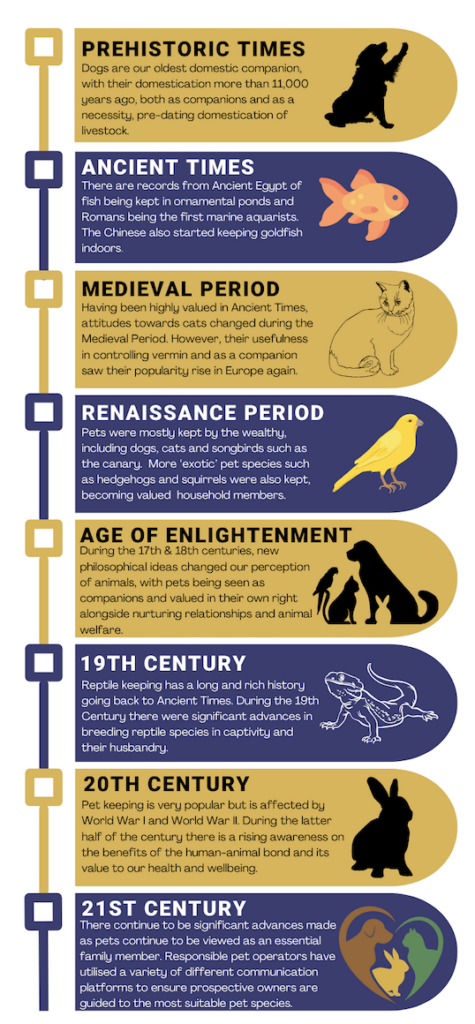History of pet & pet keeping

The history of pet keeping and the human-animal bond dates back many thousands of years, evolving significantly over time.
From Prehistoric and Ancient Times, dogs and cats were the first animals to be domesticated, being kept for companionship and necessity, for example dogs to accompany early humans when hunting and cats to control rodent populations. Our relationship with pet animals changed during the Ancient Civilizations (such as Egyptians, Romans and Greeks) whereby pet species, such as cats, became highly revered in Egypt, dogs and birds being kept for companionship by Romans and Greeks, whilst in China, dog breeding resulted in small lap dogs, such as the Pekingese, being kept by royalty of the Chinese dynasties. The Chinese were also amongst the first to undertake selective breeding of ornamental fish, with goldfish becoming a popular feature of ornamental ponds and Romans were also keeping ornamental fish as a symbol of wealth and status.
The keeping of pets as a status symbol was again notable during the Medieval and Renaissance Period, where pets were mostly kept by the wealthy, including pet species such as dogs, birds and ferrets. From the 18th Century onwards, our relationship with pet animals evolved further with the rise of pet keeping as a social norm as the idea of pets as companions became widespread.
Our relationship with pet animals has evolved further in modern times with the idea of pet animals being viewed as property, or as status symbols, being replaced with the idea the pets are not just an integral part of our lives, but also many pet keepers viewing their pets as being at the core of their family and a much loved family member. Advances in veterinary medicine, nutrition and the pet industry (such as specialised pet foods, accessories etc) have enabled advances in the health and wellbeing of our pet animals.
